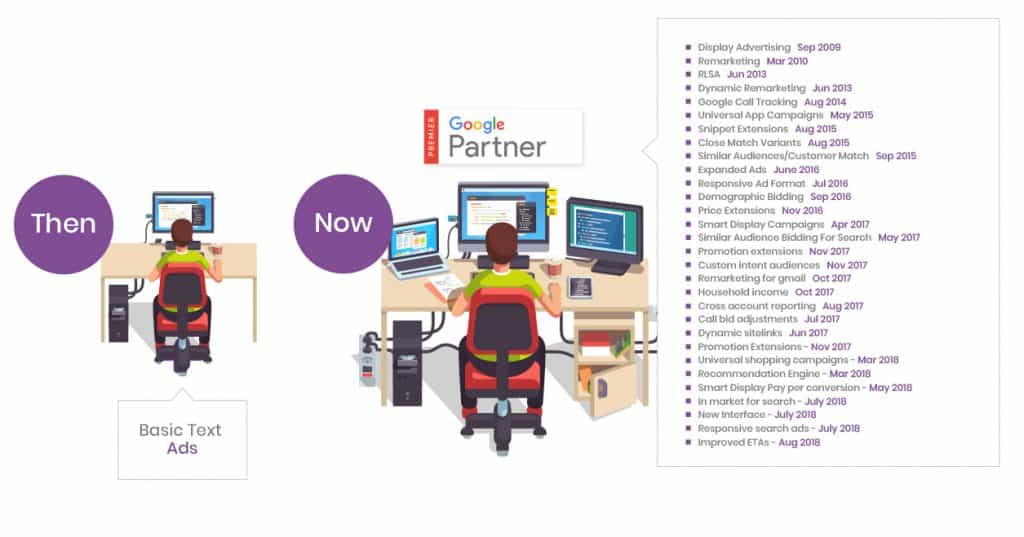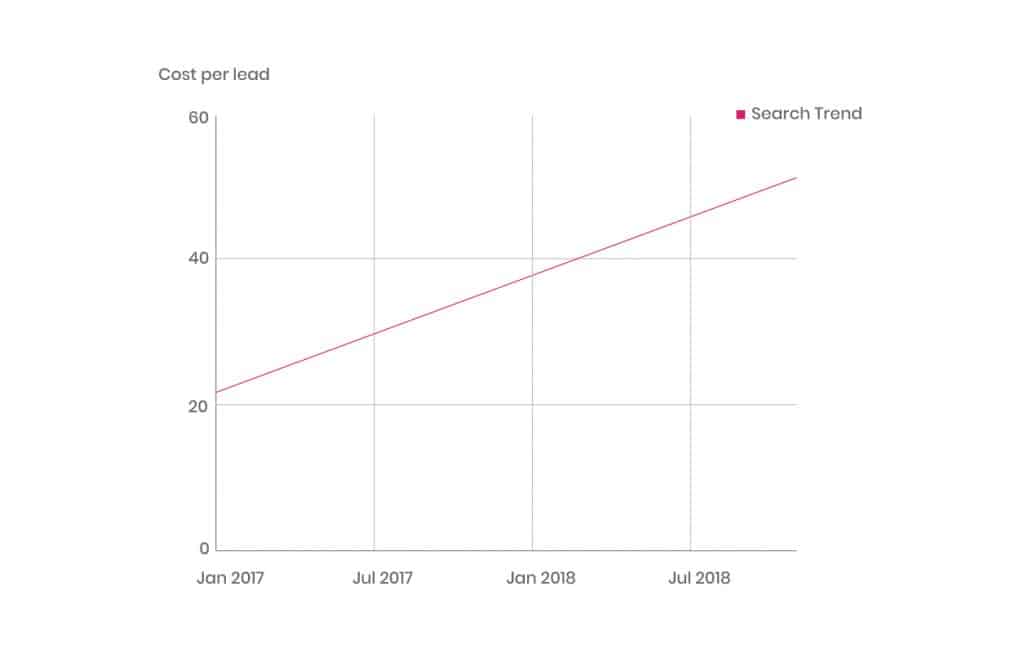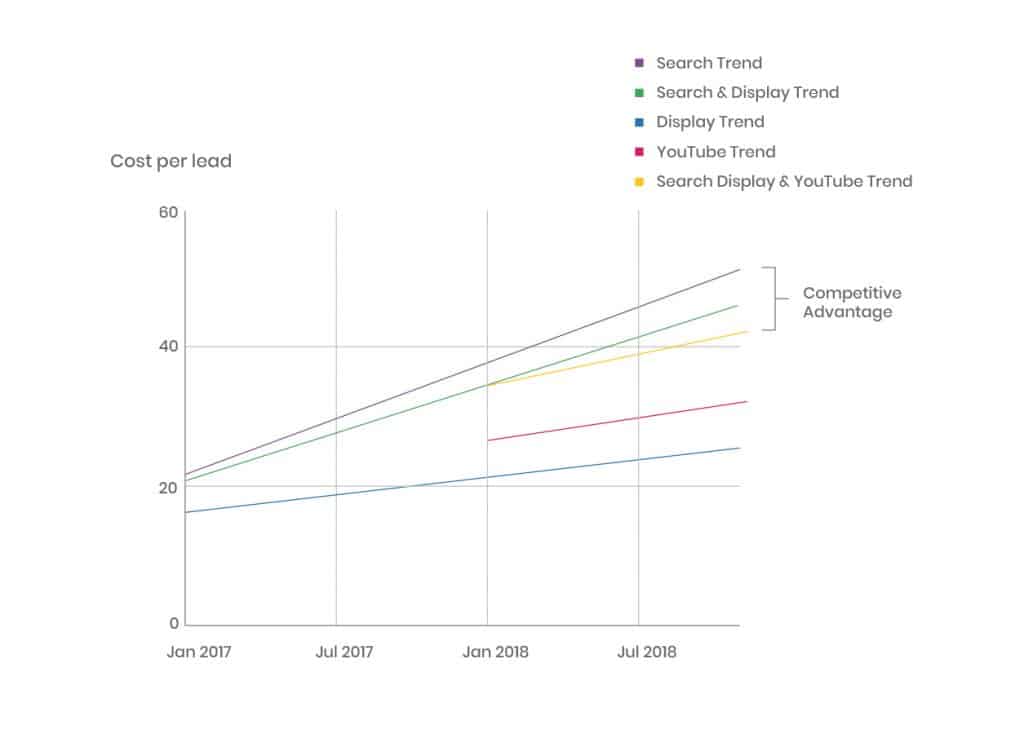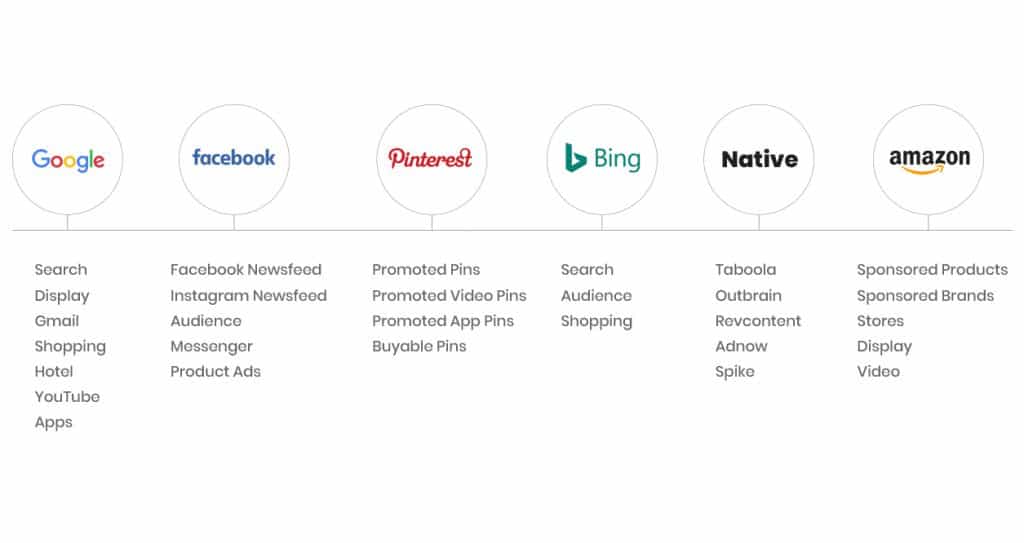Do you view marketing campaigns as an expense that must be budgeted for, or an investment in the growth of a business or brand? Guest author Ricky Solanki of Push definitely believes the later, and shares how he believes companies can positively impact their ROI by thinking like a marketing investor.
What Marketers Can Learn From Financial Traders
I first met Siam Kidd at an internet marketing expo a few years ago where, like us, he had a stand and a speaking slot. Our stand was opposite his and a large crowd were listening to his talk so I wandered over to hear more. To my surprise his talk focussed on financial investing and trading. I have followed him since and recommend that anyone looking to know how to be their own investment manager do the same.
On his website these two areas screamed out at me which essentially was saying he views companies with strong and scalable marketing as a growth asset, even listing marketing funnels (alongside gold, shares, crypto etc!) and the below extract for me should resonate with any internet marketer.
“Trading and Investing is NOT all about Lambos, private jets and trading from a beach in paradise! This is unethical marketing nonsense. (Note to all those squeeze pages you see promising riches!)
Real traders don’t do that. It’s all about learning the markets properly, then consistently profiting from them, as and when opportunities arise, in a calm and calculated manner.
You’ll eventually become a master of managing risk and it will fundamentally improve every other aspect of your life.”
Through my 15 years (I can’t believe it has been that long!) in digital, from putting up my first AdWords campaign, to today running an agency managing over £50 million in ad spend, what has made us successful – as well has hundreds of customers – is treating marketing as an investment not a budgeted cost. Something that is fluid and when opportunities arise you maximise the opportunity by scaling.
How Did Online Advertising Start To Evolve?
Back in 2004 there was only one real option for paid online advertising which was Google AdWords and a whole industry was built very quickly. Through the financial crisis those that flourished were the ones that moved to or started using online advertising as a way to grow and scale their business.
With the benefit of hindsight, it was pretty easy compared to today – there was low competition and just one type of ad to run. Just look at all the significant changes over time and how digital advertising has developed.

The transition from marketing geek to investor
Transitioning From Marketing Geek To Marketing Investor
In our agency one of the core values is speed. This means when Google releases a beta (something shiny and new), we test it and if it works we roll out across all our advertisers.
At first we did it from a marketing geek standpoint to see if we could get better results, but we soon recognized that by adding the new stuff early on you were reducing your CPA and effectively diversifying your portfolio of marketing investment.
Below is a real life example of a customer whose cost per lead on Google search continued to rise over time. Due to market conditions, it doesn’t really matter how good an optimiser you are – your cost per lead will rise over time. As more people start to invest in Google the cost per lead rises due to CPC inflation rising over time as does the choice for consumers. Similar to a bull model in investment.

But by moving advertising budget to both display and native within Google, this meant the average cost per lead would be lower than if you just stayed in search.
In this case, the cost per lead is £15 lower, which on 400 leads a month is a significant saving (£6,000 a month), which would not be realised without diversifying into new channels.

In the example above we’ve just depicted what can happen with diversification with channels just on the Google network.
Think of your advertising budget as a shared account, just as you might reallocate money from one fund to another or from one investment house to another – e.g. Black Rock New Energy to Black Rock Tech fund.
If we take this concept one step further,what we see today is the need to invest cross-channel just like an investor would switch from crypto, shares, gold, property. At different times it is right to invest in different asset classes.
Treating Marketing As Investment Opportunity
What are the main asset classes for internet marketers today?

As you can see this is now full of complexity and requires a wider base of knowledge than most marketers have right now. There is a need to keep learning and upskilling as well as bringing in specialists from each area.
If you are one platform, are you in the right one? Just because it worked last year or last month it does not mean you are in the right asset class.
Good investment traders are not emotional and make decisions based on a playbook and stats. What separates most successful investors (%) from the rest is their ability to move away from an investment when they hit a stop loss.
In the case of online advertising what does that mean?
Takeaways For The Marketing Investor
If your cost per lead or sale falls below break-even or certain profit targets, you should not continue to advertise in that channel just because it worked before. I have seen businesses decline as they don’t evolve.
They think it is temporary and don’t understand they need to be fluid and move their marketing investment around.
To survive every business needs an investment strategy for online platforms and the ability to move quickly as the market changes.
You should be across all relevant online media, hedging your investments on different platforms and the products within each and then be fluid to move your budget.
All the platforms use the word budget when you set up and review campaign performance, but it should be termed investment.
These are the key things you need to be an effective marketing investor:
- 100% accurate tracking through platform and CRM to make decisions with value attribution.
- Joined up creative strategy and setting a journey cross-platform.
- Internal systems to easily amend budgets across platform by using scripts or third party platforms.
- Charts and graphs to see performance on all platforms easily by using tools like Swydo to help easily analyse cross-platforms.
Reporting, tracking and attribution are key to approaching marketing channels as an investment opportunity. Yes AI can help but a good marketer will be the one who analyses data and the wider economy and uses AI to help them move seamlessly on different ad networks. This does not mean AI will replace the marketer but help them execute their well thought out strategy and investment % breakdowns.
We are currently building our own advertising investment platform to try and solve these issues. It is complex to aggregate and normalise data from multiple sources so it is easier for marketers to make decisions, but the platforms themselves like Google and Facebook want to keep you in their walled garden.
We hope to share our experience and outcomes in a future post.
Bio:

Ricky Solanki is CEO of Push. This is how one of his colleagues describes him:
Ricky is one of our founders and is the fountain of knowledge in Push. Proficient in everything from PPC, Social, Scripts, AI to what makes a great website, he strives for innovation and excellence in all aspects of digital. He looks after the Push pet dog and for extra attention often brings her to the office. He has a twitter handle but doesn’t use it so please contact him on LinkedIn.
